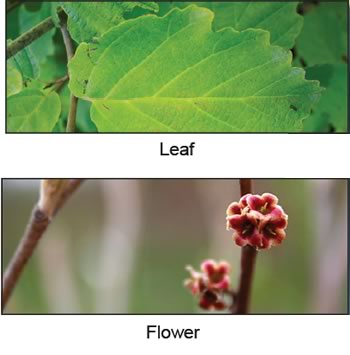Witch Hazel
Witch Hazel has gorgeous fall colour and it’s fragrant fall flowers makes this a nice selection for a large residential garden.
Hamamelis virginiana aka Common Witchhazel, American Witchhazel and Witch Hazel is used to make witchhazel extracts. Salt and deer resistant. Attracts birds. Good plant for
naturalized areas. Random branching habit, gorgeous fall colour and it’s fragrant fall flowers makes this a nice selection for a large residential garden.
Witch Hazel Characteristics
 Leaves: Medium green leaves turn to beautiful yellow in fall.
Leaves: Medium green leaves turn to beautiful yellow in fall.
Stem/Bark: Smooth gray to grayish brown on older stems.
Flower: Fragrant yellow flower clusters along the branch appear in late fall and often stay in bloom after the leaves have fallen.
Fruit/Nut: Brown seed pods, not showy.
Habit: Small deciduous tree or large shrub. Crooked spreading branches gives this plant architectural interest. Rounded open crown.
Hardiness: Zone 3
Height: 20’ – 30’
Width: 20’ – 25’
Why grow native plants?
A native plant is defined as a species of fauna that was already established before colonization. There are numerous benefits to the use of native plants. Native plants have grown and evolved in a given area for generations and therefore are more prepared to face the elements. As a result they are much hardier and less finicky to care for. The wildlife in the area has also evolved along side these plants, and because of this has formed bonds with them. Most butterflies have a specific plant species from which they collect nectar for their offspring.
There are many birds that will feed directly from local trees for seed, nectar or fruit, but won’t use the bird feeder you’ve bought to attract them. These plants also work together to grow as natural plant communities. Most of the trees won’t grow their leaves until after the wildflowers have had an adequate amount of time to flower before they’re covered by shade. Finally, of course, there is the fact that all of these plants and animals combine to make a sustainable, complete, functioning ecosystem. Why fight thousands of years of evolution?
Have questions about native plants? Post a comment Ian will get back to you.






